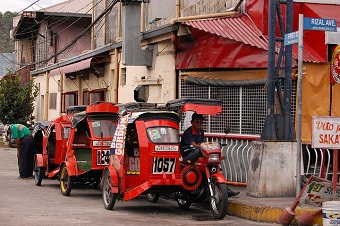Can thousands of electric tricycles clean up a country?
 In the Philippines, getting around cities by tricycle (of the combustion engine variety) is a common sight. Nearly half of the registered motor vehicles in the country are either motorcycles or motorized tricycles.
In the Philippines, getting around cities by tricycle (of the combustion engine variety) is a common sight. Nearly half of the registered motor vehicles in the country are either motorcycles or motorized tricycles.But anytime when there’s a large concentration of gas-powered vehicles, even when used as a form of public transit, pollution levels rise. To combat the high pollution levels cities in the Philippines experience, the country’s Department of Energy is partnering with the Asian Development Bank to provide the country with as many as 100,000 electric tricycles by 2020. The number pales in comparison with the 3.5 million registered motorized tricycles in the country, but it is certainly a start at cleaning up urban air.
The effort started in Mandaluyong City, part of Metro Manila, with a modest pilot program with 20 electric tricycles using two types of lithium ion battery technology. Ten of the models have 3 kWh battery pack, which can ride about 25 to 30 miles on one charge. These batteries can be recharged to 80 percent capacity in 30 minutes. The other half of the tricycles contain a 6 kWh battery pack which can travel about 62 miles on a single charge. As The City Fix reports, the program is off to a good start:
The success of the Metro Manila pilot program is a promising start to the project. Drivers have found that e-trike batteries can be charged for $1, as opposed to $6-$8 to fill a gas tank. While the vehicles cost more up front than traditional tricycles, they cost less to operate and have lower maintenance costs.
The Philippine government along with ADB are looking to make the e-trike more widely available by developing the local e-trike manufacturing industry. With 5,000 deaths in Metro Manilla caused by air pollution, according to The City Fix, it’s a sustainable industry worth looking into.
You can return to the main Market News page, or press the Back button on your browser.

